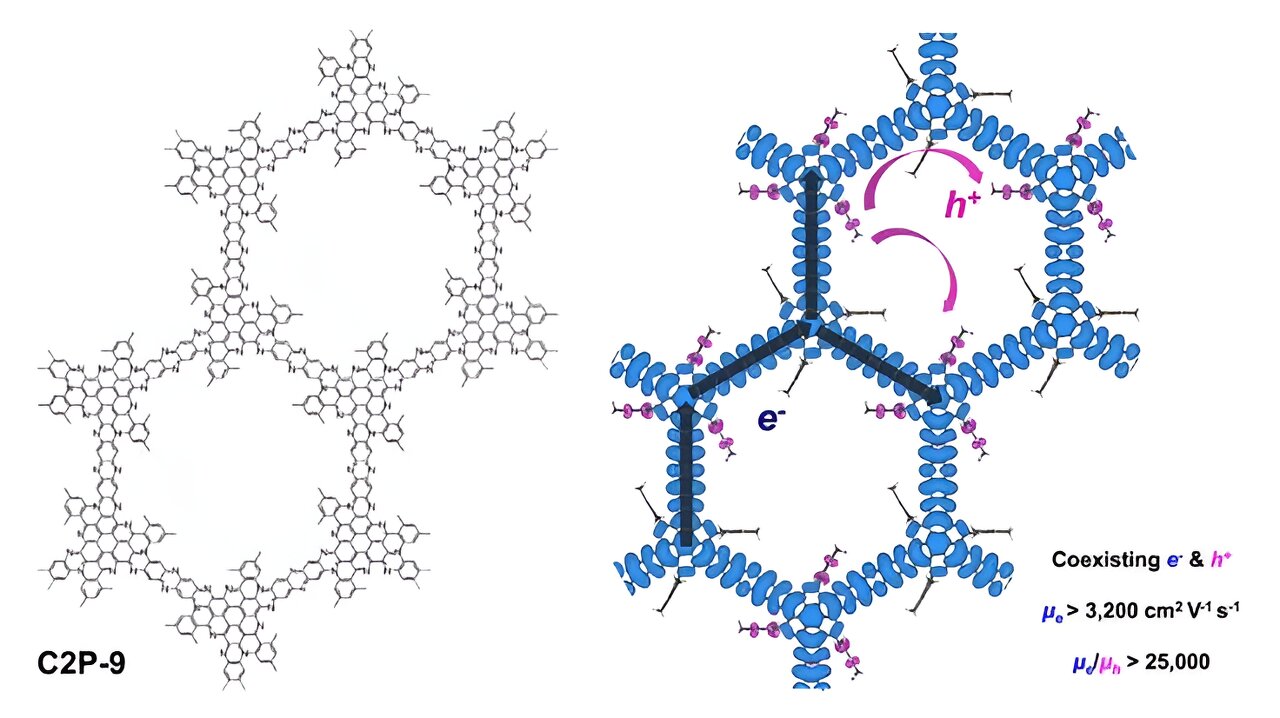Scientists have created conducting two-dimensional polymers exhibiting electron mobility comparable to graphene. Their research has been featured in the online edition of Chem.
Graphene, called a “dream material,” exhibits electron mobility 140 times faster than silicon and a strength 200 times that of steel. However, its lack of a band gap, which is essential for regulating electrical current, prevents its use as a semiconductor. Researchers have been actively exploring various approaches to develop a semiconductor that shows graphene’s exceptional properties.
One promising approach is the development of conducting polymers. Researchers are exploring conducting polymers with a fused aromatic backbone, mimicking the chemical structure of graphene, aiming to attain exceptional properties. Yet, challenges arise during synthesis due to the interlayer stacking between growth intermediates, hindering proper polymer growth.
In this research, the team consisting of Professors Kimoon Kim and Ji Hoon Shim, Dr. Yeonsang Lee from the Department of Chemistry at Pohang University of Science and Technology (POSTECH) and Professor Jun Sung Kim from POSTECH’s Department of Physics and the Center for Artificial Low Dimensional Electronic Systems at the Institute for Basic Science, utilized triazacoronene, possessing a chemical structure similar to graphene, and introduced bulky pendant functional groups to its periphery.
By introducing steric hindrance from these pendant groups, the team successfully suppressed the stacking of two-dimensional polymer intermediates during the polymerization of triazacoronene monomers. This led to increased solubility of the intermediates and facilitated the synthesis of two-dimensional polymers with higher degree of polymerization and fewer defects, resulting in outstanding electrical conductivity after p-type doping.
Remarkably, magnetotransport measurements revealed that coherent multi-carrier transport with finite n-type carriers show exceptionally high mobility over 3,200 cm2 V−1 s−1 and long phase coherence length surpassing 100 nm, in stark contrast to hole-carrier transport with 25,000 times lower mobility at low temperatures. This dramatic disparity between electron and hole-carrier transport is attributed to spatially separated electronic states near the Fermi level, which consists of dispersive and flat bands.
Professor Kimoon Kim from POSTECH expressed the significance of the research by saying, “We’ve achieved a breakthrough in addressing the low electron mobility, a major challenge in organic semiconductors, and in controlling the conduction pathways for electrons and holes at the molecular level.”
“This research shed light on enhancing material performance across various industrial applications including batteries and catalysts.”
More information:
Yeonsang Lee et al, Observation of ultrafast electrons in pendant-embedded conducting two-dimensional polymers, Chem (2024). DOI: 10.1016/j.chempr.2023.12.007
Citation:
Development of organic semiconductors featuring ultrafast electrons (2024, April 19)
retrieved 19 April 2024
from https://phys.org/news/2024-04-semiconductors-featuring-ultrafast-electrons.html
This document is subject to copyright. Apart from any fair dealing for the purpose of private study or research, no
part may be reproduced without the written permission. The content is provided for information purposes only.

